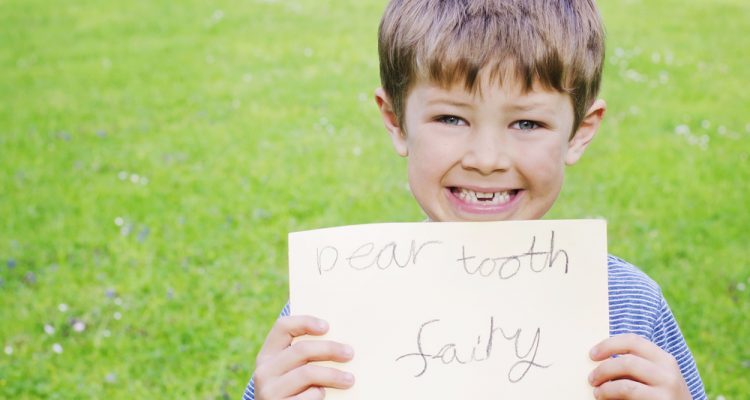Like America’s other two famous folklore figures – Santa Claus and the Easter Bunny – the tooth fairy slips in and out of houses in the middle of the night to deliver gifts or money to sleeping children. In exchange for this small gift, the tooth fairy takes a baby tooth, left under each child’s pillow.
Unlike Santa Claus and the Easter Bunny, the tooth fairy does not have a specific look, age, or gender. Nor does this popular folklore figure have a clear origin story. Keep reading to explore the history and stories that led us to imagine the benevolent tooth fairy we know today.
Baby Teeth Rituals Around the World
Globally, all cultures have a ceremonial method for disposing of baby teeth, each with its own meaning. Nine of the most common documented rituals include:
- Throwing the tooth into the sun;
- Throwing the tooth into fire;
- Throwing the tooth between the legs;
- Throwing the tooth onto or over the roof of a house;
- Placing the tooth in a mouse hole or offering it to another animal;
- Burying the tooth;
- Hiding the tooth where animals cannot find it;
- Placing the tooth in a tree or on a wall; and
- Swallowing the tooth – either the mother, child, or an animal.
Historically, baby teeth have held various levels of significance across different cultures and areas of the world.
- In the past, teeth have been used as a type of supernatural protection against evil. A tooth placed under the pillow or by the bed could ward off destructive magical forces. This belief stemmed from the fact that teeth are some of the strongest and most indestructible structures in the human body – stronger even than bones.
- In some parts of Europe, baby teeth were burned as a superstition. If not, the child would spend his or her afterlife looking for them.
- Another traditional European ritual was to bury baby teeth, to spare the child a life of hardship.
- Europe also marked the birthplace of the term “tand-fe” or “tooth fee.” The Vikings bought children’s teeth to wear around their necks during raids and battle, for good luck.
The modern-day tooth fairy is both a largely American and a largely new phenomenon. This folklore figure did not become a household name until the turn of the twentieth century. Other parts of the world share the idea of a deity who exchanges baby teeth for money or a small gift, but the idea of this deity as a sprite or fairy is unique to western culture.
Birth of the Tooth Fairy
The American tooth fairy came into being from two major inspirations:
- Around the world, the most common characterization of a friendly tooth deity is a mouse that enters children’s rooms in the middle of the night and removes baby teeth. In Italy this mouse is known as “Topolino”, in France as “La Petite Souris,” and in Latin countries as “Ratóncito Pérez.” The figure of a mouse is used because rodents continue to grow strong teeth their entire lives. Symbolically, people hope that “sympathetic magic” will transfer good luck and healthy teeth onto the child who lost a tooth.
- The tooth fairy legend also draws upon the general “good fairy” folk character that migrated from Europe to America. The good fairy persona was popularized and spread across America due to Disney’s depictions of good fairies in movies like Peter Pan and Cinderella.
Tooth Fairy Appearances Across America
- One of the first – if not the first – documented references to the tooth fairy was in an eight-page playlet for children written by Esther Watkins Arnold. The playlet was published in 1927.
- In 1949, the tooth fairy landed a reference citation in World Book.
- In the 1970s, a Chicago radio DJ made an on-air reference to the tooth fairy, prompting hundreds of calls to the American Dental Association (ADA) from citizens wanting to know more about this mysterious fairy.
Regardless of how this nimble-fingered sprite slipped into American culture, the tooth fairy is a source of comfort for kids who are losing their baby teeth. Tooth loss is one of the first rites of passage children experience, which can be scary.
As baby teeth begin to fall out and adult teeth begin to grow in, having a regular dental check-up is an important part of maintaining good oral health. Contact Boyett Family Dentistry today to schedule an appointment.






